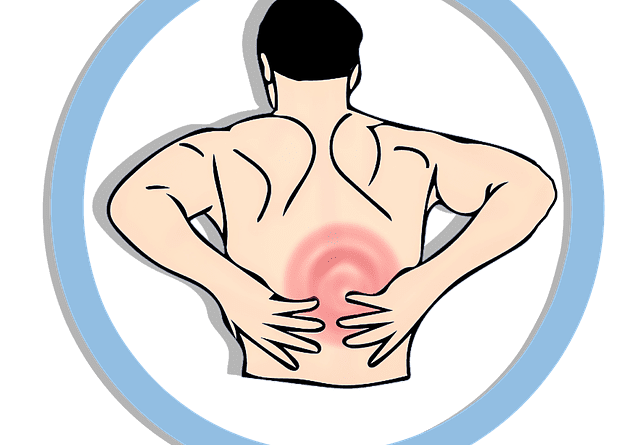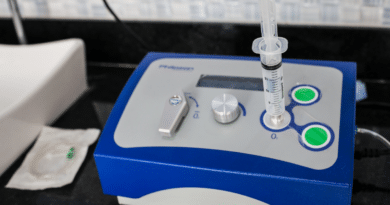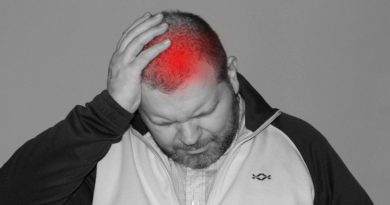Don’t Delay Seeking Help When it Comes to Back Pain
As many of you know, I suffer from lower back pain. Sometimes I even get the dreaded knot in my back that causes a stiff neck or all-day pain. Back pain can be inconvenient if it pops up at the wrong time. It might make it difficult to complete physical activity depending on the severity. At the very least it can be incredibly annoying.
Have you ever taken the time to think about what the pain in your back is telling you? It may sound simple, but listening to your back could make a world of difference. In order to understand why back pain can be important, you might want to start by gaining a basic knowledge of the function of your back.
Disclaimer: This article is for informational purposes only and is not meant to treat or diagnose any condition. It is recommended that you speak with your doctor before starting any exercise program, changing your daily nutrition, or adding any supplements to your regimen.
Table of contents
What is Your Back’s Purpose?
Your back is tasked with the vital job of protecting your spinal cord while supporting your arms and legs. It consists of your vertebral column, spinal cord, and canal, rib cage, scapula, several muscle groups, and extends down to your coccyx (tailbone).
Related Article: 6 Ways to Protect and Strengthen Your Lower Back
Your vertebral column is one of the most important parts of your back. It houses and protects your spinal cord and supports your upper and lower body. It is made up of a series of bones called vertebrae. Between each of these, there are cushions, called intervertebral disks, made of cartilage which provides the necessary shock absorption that prevents wear and tear during locomotion.

Your vertebral column is also the point of attachment for several muscle groups and ligaments which are essential to the support and protection of crucial anatomical structures. Muscle groups that can be found on your back include:
- Intertransversarii muscles – stabilize contiguous vertebrae enabling better action from separate muscle groups.
- Multifidus spinae – aid the movement of your spine as one.
- Trapezius muscle – facilitates stability and movement of your scapula. When your scapulae are stable they can also be responsible for the movement of your spine.
- Latissimus dorsi – supports a variety of movements of your shoulders and torso
Your spinal cord consists of millions of nerve fibers which run through the spinal canal. The spinal canal runs from your brain to the region between the first and second lumbar vertebra. This is where it separates into several groups of fibers which make up the nerves that extend down into the lower part of your body. These nerve fibers carry signals from the brain to your entire body which facilitate the control and coordination of your body parts, organs, as well as muscles. They also carry signals back to your brain.
The Importance of Pain
Think of your spinal cord and nerves as a telephone line. If the signals that are transmitted to and from your body are like phone calls, then the pain would be your body’s way of communicating with you on a conscious level. Pain is a sensation which alerts your brain that your body is being hurt or damaged in some sort of way.
Types of pain include:
- Acute pain is pain that is short term. It is sudden or severe pain that clears up with a certain amount of time. This type of pain can be experienced in the event of injury, illness, or surgery.
- Chronic pain is pain that is lasting. It is persistent and is considered a health condition on its own.
Paying attention to the pain could ensure that you take the appropriate action in dealing with and preventing any additional damage being done.
What Causes Back Pain?
Back pain can be caused by a variety of factors, and it’s important to note that the specific cause can vary from person to person. Some common causes of back pain include:
- Muscle Strain: Overexertion, lifting heavy objects, or sudden movements can strain the muscles and ligaments in your back, leading to back pain.
- Poor Posture: Sitting or standing with poor posture over extended periods of time can put stress on the muscles and spine, resulting in back pain.
- Injury: Trauma from accidents, falls, or sports-related incidents can cause damage to the structures of the back, leading to back pain.
- Herniated Disc: The discs that cushion the vertebrae can bulge or rupture, pressing on nerves and causing pain. This is often referred to as a “slipped” or “herniated” disc.
- Spinal Stenosis: This is a condition where the spinal canal narrows, putting pressure on the spinal cord and nerves, leading to pain and discomfort.
- Degenerative Disc Disease: Over time, the discs between the vertebrae can degenerate, leading to back pain and reduced flexibility.
- Arthritis: Conditions like osteoarthritis and ankylosing spondylitis can affect the spine’s joints and cause chronic back pain.
- Muscle Imbalances: Weak or imbalanced muscles can cause improper alignment of the spine, leading to back pain.
- Sciatica: This occurs when the sciatic nerve, which runs from the lower back down the legs, is compressed or irritated, causing pain that radiates down the leg.
- Kidney Problems: Kidney infections or stones can cause pain in the lower back that may be mistaken for back pain.
- Structural Issues: Scoliosis (abnormal curvature of the spine), kyphosis (excessive rounding of the upper back), or lordosis (excessive inward curvature of the lower back) can lead to discomfort.
- Infections: Spinal infections can lead to localized pain in the back.
- Cauda Equina Syndrome: This is a rare but serious condition where a bundle of nerves at the base of the spine is compressed, leading to severe pain and potential loss of function.
- Psychological Factors: Stress, anxiety, and depression can contribute to the perception of pain and the way it is experienced.
It’s important to consult a medical professional if you’re experiencing persistent or severe back pain. They can diagnose the underlying cause and recommend appropriate treatment, which might include physical therapy, medications, lifestyle changes, or in some cases, surgical intervention.
How to Deal With Back Pain
How you deal with back pain is most likely going to depend on the location and severity of the discomfort. You should always consult a physician to receive proper diagnosis and treatment. Some people have even found success with programs such as My Back Pain Coach.
When it comes to your back, one of the simplest ways you can prevent pain is to make sure that you are getting regular exercise. Working out muscle groups on your back could significantly improve their ability to respond to the stress and strains of life. Your muscles aren’t the only things that will benefit from this. This could also strengthen tendons and ligaments. This way, when you participate in a strenuous activity your back will be prepared to bear the load.
You could also incorporate the use of therapeutic tools into your regular exercise. These types of tools could include foam rollers and massage balls. Their purposes include easing inflammation, increasing blood flow, as well as improving flexibility and range of motion. The 10 best massage balls for back pain are going to be portable and discreet allowing you to release irritating trigger points, decreasing tension, and stretch those hard to reach areas.
Massage therapy is also an option that could have lasting benefits, both physical and emotional. You may experience improved performance as a result of releasing tension, stiffness, and pain through massage therapy. Apart from all the other benefits, you should most likely find that a massage is a good way to relax and relieve stress.


*Disclosure: This article may contain affiliate links or ads, which means we earn a small commission at no extra cost to you if you make a purchase through these links. These commissions help support the operation and maintenance of our website, allowing us to continue producing free valuable content. Your support is genuinely appreciated, whether you choose to use our links or not. Thank you for being a part of our community and enjoying our content.
PLEASE CONSIDER SHARING THIS ON YOUR SOCIAL MEDIA TO HELP OTHERS LEARN MORE ABOUT THIS TOPIC.






